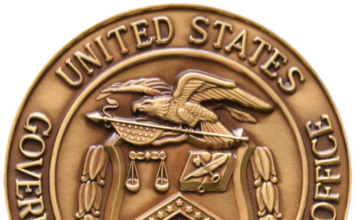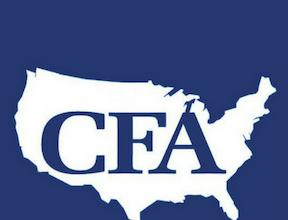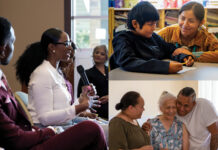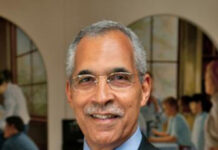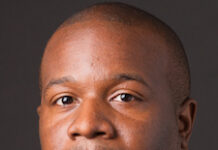National Academies Call for Greater Federal Efforts to Improve Health Equity
To improve health equity in the United States, the president should create a permanent federal body responsible for improving racial, ethnic, and tribal equity across the federal government, according to a new report from the National Academies of Sciences, Engineering, and Medicine.
Study Presents Data on the Benefits of HBCUs for Black Students
The study found that students initially enrolling in HBCUs are 14.6 percentage points more likely to earn a bachelor's degree than Black students who enroll at predominantly White institutions. Black students who enrolled at a non-HBCU four-year institution were 24 percentage points less likely to complete a bachelor’s degree within six years than White students overall.
Discriminatory Managers Negatively Impact Output of All Workers
A recent study by Nicholas Heiserman of Oklahoma State University and Brent Simpson of the University of South Carolina finds that when people work for discriminatory managers, they put in less effort. That’s true both when managers are biased against them and when they’re biased in their favor.
Diverse Classrooms in College STEM Courses Improve Learning Outcomes for All Students
Students achieve better grades in college science, technology, engineering, and math (STEM) courses when those classrooms have higher numbers of underrepresented racial-minority and first-generation college students, according to new research published by the American Educational Research Association.
Study Finds Black Patients Receive Inferior Care After Suffering a Stroke
Black patients are significantly less likely to receive the gold standard of stroke care, according to new research from the University of Georgia.
Black Women Used Social Networks to Help Them Persist in STEM
The new study sought to shed light on how relationships and community support success for Black women as they pursue education in STEM fields.
Blacks Making Steady Progress in Medical School Enrollments
In 2023, there were a record 10,133 African Americans enrolled at U.S. medical schools. They made up 10.4 percent of total enrollments. In 2015, Blacks were 7.2 percent of total enrollments.
Teacher Attrition at K-12 Schools in the United States
While Black teachers at public schools were more likely than their peers to leave the profession, Black teachers at private schools were less likely than their peers to leave the teaching profession.
Columbia University Scholars Develop an Intervention to Combat Unconscious Racial Bias
Certain facial features — like downturned lips and a heavy brow — are known to make someone appear untrustworthy to others. Such facial biases influence our everyday social interactions as well as high-stakes decisions, including who we hire, elect to political office, or find guilty of a crime.
New Study Finds The Stereotype Threat Is Not a Factor for HBCU Students
The authors found no significant difference in the number of questions answered correctly by the subjects in the control and treatment groups - that is, the HBCU students who weren't reminded of their race and those who were reminded performed equally well on the test.
Racial Differences in Cold Sensitivity Are Both a Health and Economic Issue
A new study at the University of Connecticut suggests Black households pay more to keep their homes comfortable, in part due to increased cold sensitivity. Black people who can’t afford those couple extra degrees end up seeking medical attention more often than their White counterparts.
Blacks Are Less Likely Than Whites to Be Referred to Home Health Care After...
According to a new study at the University of Michigan, about 22 percent of Black patients are referred by discharge nurses to home health care compared to 27 percent of White patients.
The Many Challenges Facing Black Students Pursuing STEM Doctorates
The research team at the nonprofit RTI International found that Black STEM Ph.D. recipients are considerably more likely to earn their doctorate from a private for-profit institution and that they also take significantly longer to complete their degree and borrow substantially more for their graduate education.
Study Finds That Large Cities Foster Socioeconomic Segregation
The researchers used GPS data collected in 2017 from 9.6 million cellphones across 382 metropolitan areas in the United States to determine how often people of different socioeconomic statuses crossed paths during the day. They collected data on almost 1.6 billion path-crossings.
Scholars From Sub-Saharan African Nations Teaching at U.S. Colleges and Universities
There were 2,220 scholars from sub-Saharan African nations teaching at U.S. colleges and universities in the 2021-22 academic year. This was up nearly 50 percent from the prior year at the height of the COVID-19 pandemic. Scholars from sub-Saharan African nations made up only 2.4 percent of all foreign scholars teaching in the United States that year.
After a Sharp Drop During the Pandemic, Young Black Students Return to School
In 2020, 40.9 of non-Hispanic Black children ages 3 and 4 were enrolled in school compared to 61.7 percent in 2022. Non-Hispanic Black children ages 3 and 4 were more likely to be enrolled in school in 2022 than similarly aged children in any other major racial or ethnic group.
UCLA Study Finds That There Is a Large Racial Gap in the Urban Wage...
A new study by researchers at the Luskin School of Public Affairs at the University of California, Los Angeles, find that the urban wage wage premium primarily benefits White and male workers, with significantly less positive impacts for Black workers, and possibly none for Latino and female workers.
Same Sex Couples Are Far More Likely to Be Interracial Than Opposite-Sex Couples
A new report from the U.S. Census Bureau finds that in 2022, there were about 1.3 million same-sex couple households in the United States. Roughly 740,000 were married and 540,000 unmarried. About 31 percent of married same-sex couples were interracial in 2022, much higher than the 19 percent of married opposite-sex couples that were interracial.
American Students Studying Abroad in Sub-Saharan Africa
In the 2021-22 academic year, there were 4,614 American students who studied at universities in sub-Saharan Africa. This is about one tenth of the number of students from sub-Saharan Africa studying at U.S. universities.
U.S. Public Schools Remain Separate and Unequal
Approximately 522,400 students, or 1 percent of overall student enrollment, attended public schools where fewer than half of the teachers met all state certification requirements. Of the students attending those schools, 66 percent were Black and Latino students.
Hospitals That Serve Mostly Black Patients Are Less Likely to Have Core Resources to...
UCLA researchers looked at nearly 4,400 hospitals across the U.S., including 864 with high numbers of Black and Hispanic patients. The team looked at the availability of 34 cancer-related services at these facilities. They found that hospitals serving high numbers of Black patients were significantly less likely to offer all the core services.
Huge Increase in Students From Sub-Saharan Africa at U.S. Colleges and Universities
In the 2022-23 academic year, the number of students from Nigeria was nearly three times the number of students from any other sub-Saharan African nation. Nigerians made up more than one third of all students from sub-Saharan Africa who studied in the United States in the 2022-23 academic year.
Government Programs to Attract Physicians to Underserved Areas Have Not Worked
A federal program created to attract physicians to medically underserved areas of the United States has not achieved this intended effect or reduced mortality rates in these regions, a new Yale study finds.
UCLA Report Finds That Television Shows Have Made Progress in Diversifying Their Casts
The tenth annual Hollywood Diversity Report produced by the Entertainment and Media Research Initiative at the University of California, Los Angeles finds that, for the first time, overall cast diversity in television shows reflected the population across all platforms following an upward trend over the last decade.
Study Finds Racial Discrimination Has a Major Impact on Stress Levels in Teens
Researchers measured salivary cortisol five times a day over three days and found that teens who experienced peer discrimination — racial discrimination from other teens — had unhealthy levels of the so-called stress hormone cortisol circulating in their bodies throughout the day. This can lead to chronic health conditions.
“Black Sounding” Names Continue to Be a Disadvantage in the Job Market
Twenty years ago, a ground-breaking study found that people with names generally thought to be Black who submitted resumes to employers were less likely to be contacted for the job interviews compared to people with similar qualifications who had names that did not lead employers to believe the applicant was Black. A new study has found that not much has changed.
Outlawed 55 Years Ago, The Effects of Redlining Are Still Being Felt in Communities...
Although the practice of redlining has been illegal since 1968, multiple studies show that redlining’s harmful legacy has left nonwhite communities struggling with air pollution, reproductive health disorders, and fewer urban amenities more than 50 years later.
Study Finds That African Americans Are Only Small Percentage of Sperm Donors
Donors who identified as Hispanic (10.9 percent) or Black (3.3 percent) were significantly underrepresented as compared to the U.S. population. Hispanics are 22 percent of the population and Blacks are 13.3 percent. Asian donors were overrepresented, making up 21.9 percent of the donors but only 6.5 percent of the U.S. population.
Stress From Discrimination, Racism, and Safety Fears Leads to Increased Heart Disease Risk for...
The research led by scholars at Virginia Commonwealth University found that the cardiovascular impact of these stressors varied by gender, with Black women more affected by discrimination and Black men more affected by neighborhood safety.
Black Youth Are Scarce in Suicide Research Studies
Black youth under 13 are twice as likely to die by suicide compared to their White peers, and the suicide death rate among Black youth is increasing faster than any other racial or ethnic group. But a new study by scholars at the University of Houston finds that Black youth are almost nonexistent in the literature that guides treatment development.
Students From Underrepresented Groups Fuel Enrollment Growth in Higher Education
Black, Latinx, and Asian students accounted for most of the undergraduate and graduate enrollment growth this fall. Black enrollments were up 2.1 percent. Black enrollments climbed due to large increases in enrollment from students in the top income brackets.
Blacks Are Vastly Underrepresented in Staff Positions in the U.S. Senate
A new report from the the Joint Center for Political and Economic Studies in Washington, D.C., finds that African Americans account for 13.6 percent of the U.S. population, but only 2.1 percent of Senate personal office top staffers. Of the 100 chiefs of staff in the U.S. Senate, only one is Black.
FBI Releases New Data on Hate Crimes in the United States
There were 778 hate crimes in elementary or secondary schools that were reported to the FBI in 2022. There were only 403 reported hate crimes on college campuses.
Black Enrollments in Graduate Education Show a Significant Decrease
Between Fall 2021 and Fall 2022, first-time graduate enrollment decreased by 7.8 percent among Black/African American students. Only 4.5 percent of U.S. citizens and permanent resident students enrolled for the first time in physical and earth sciences were Black. Blacks were 5.7 percent of first-time graduate students in engineering.
Black Scores on the ACT College Entrance Examination Are in Freefall
Some 20 percent of all Whites who took the ACT test were deemed college-ready in all four areas of English, mathematics, reading, and science. For Blacks, just 3 percent of all test takers were deemed college-ready in all four areas.
Blacks Are Vastly Underrepresented in Leadership Roles in Academic Surgery
In a study of 165 surgical departments only 8.9 percent of leaders were of racial or ethnic groups underrepresented in medicine. African American women made up only 1.5 percent of all department chairs and 4 percent of vice chairs. They made up 0.6 percent of division chiefs.
